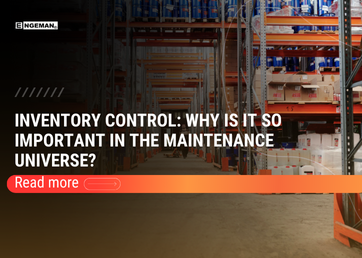Contents
What is maintenance reliability?
Maintenance reliability is the percentage or probability of proper operation, within a certain period of time, of machines, systems, and/or items inserted in the production chain.
This measurement is performed by considering data related to equipment performance history and its qualitative estimate of future operation.
Based on the premise that the concept of failure is already known, we can divide systems within a maintenance process into non-repairable systems and repairable systems.
What are non-repairable systems?
Non-repairable systems are those that have a maximum lifespan and, after failure, are replaced completely or whose maintenance restores them to a new state. A simple and didactic example of a non-repairable system is a light bulb. When a bulb fails due to burnout, the most common solution is to discard it and replace it with a new one.
What are repairable systems?
Repairable systems, the vast majority in maintenance management, are those that, after a failure occurs, can be repaired by replacing or fixing some component. A simple and didactic example is a car. When a car fails, we usually take it for maintenance, where, after repairs, it returns to its functional state, but not to a “new” status.
As in the case of the car and most of the equipment subject to maintenance, when we analyze repairable systems, failure data is collected while the system is in use. These failures are generated by different components that may operate under different conditions over time.
What is the importance of reliability?
Although each company has its own characteristics, reliability is based on the following points:
- Extend the performance time between scheduled downtimes;
- Ensure support and active cooperation among people involved in maintenance operations;
- Improve maintenance productivity;
- Create a proactive and planned approach;
- Adopt efficient tactics for solving failures and problems.
What is the importance of reliability calculation?
After defining what repairable and non-repairable systems are, let’s see how to calculate the reliability of a repairable system, which is subject to environmental unpredictability and the possibility of not failing during a given period of time.
In probability studies, if the analysis concerns the count of certain events, such as the number of parts produced, the number of failures per period, or even how many ants are in an anthill, then the Poisson distribution is often an appropriate model. For example, if I want to study the chance of a certain piece of equipment producing without failures for a month, I collect data on how many functional failures were observed in previous months and calculate an average time between these failures, also known as MTBF. With this, it is possible to verify, for instance, the probability of this equipment not failing for a month or even longer.
The important point in the example above is that we know the average time between failures, but they occur randomly (stochastic process). We may have consecutive failures, or we may go years without a failure due to this unpredictability.
A Poisson process is a probabilistic model for a series of discrete events where the mean time between events is known, but the exact timing of events is random.
How to calculate reliability?
Knowing that the reliability of repairable systems is usually characterized by a Poisson process, and that the analysis of reliability over time is represented as an exponential random variable, we can use the reliability analysis based on the exponential distribution.

This analysis assumes that:
- The events are independent of each other. The occurrence of one event does not affect the probability of another;
- The average rate (events per period) is constant;
- Two events cannot occur at the same time.
To apply the reliability calculation, we can, for example, calculate the probability of equipment x not breaking down in the next 90 days. To perform the calculation, we need the failure rate of the equipment for the desired period.
Let’s assume this historical failure rate is equal to 0.0178. Applying it to the formula, we get:
R(90) = e^(-0.0178*90)
Where:
- R(90) is the probability of not failing;
- e is Euler’s number;
- -0.0178 is λ (lambda, the failure rate);
- 90 is the time horizon we want to analyze.
The result is 0.2014931285, which we can interpret as a 20.14% probability of not failing within 90 days.
How to calculate reliability in Excel?
We can use the same formula to measure the reliability of simple repairable systems. For more complex situations, other reliability analysis methods may be applied with better results, but that will be a topic for another conversation.
In Excel, you can create a spreadsheet with the following parameters:
- Number of days without failure or time in good operation (in days);
- Number of failures observed in the period;
- Failure Rate, which will be used as λ (lambda);
- Days for reliability projection, which will be used as parameter t (time).
Using CMMS for reliability application
The consumer market has never been as demanding and competitive as it is today. Because of this, industrial activities are planned and analyzed with great care and attention. The concepts of reliability, availability, and maintainability only work properly when maintenance supervisors have up-to-date information.
Trying to perform all these activities manually leads to poor performance indicators and hinders overall management. At these times, the use of software for maintenance management and control is the best option.
Get to know Engeman® and bring more reliability to your processes!



